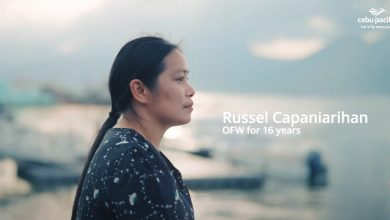The Metropolitan Museum of Manila opens 2018 with a major exhibition of ELMER
BORLONGAN: An Extraordinary Eye for the Ordinary. Curated by leading historian and
curator Dr. Ambeth Ocampo, the exhibit features a survey of Borlongan’s body of works in
celebration of 25 years of his artistic career.
The exhibit features over 200 works from 1979 to 2015, by retelling stories of everyday life
based on what he sees in his surroundings. The murals, paintings, and drawings that fill the
walls of this exhibition reflect on Borlongan’s practice and continued commitment to his
art, vision, and powerful visual narratives.
Growing up in the backstreets of Mandaluyong, Borlongan illustrates a ‘mise-en-scene’ of
the urban milieu of the underprivileged, the proletariat, and the have-nots of society.
Notable in his works are his steadfast characters—the street vendors, sidewalk beggars,
assiduous disabled men, and scenes that portray local traditions and cultural practices that
engage society today.
ELMER BORLONGAN: An Extraordinary Eye for the Ordinary is on view at the
Metropolitan Museum of Manila from January 22 until March 28, 2018, with the support of
Pioneer Insurance and Asia Coatings Phils., Inc.
With an extraordinary eye for the ordinary, Elmer Borlongan re-presents the Filipino going
about life. A tradition that goes back to: Damian Domingo, Jose Honorato Lozano and
Justiniano Asuncion whose depictions of 19th century Philippine life have come down to us
as Tipos del Pais (Country Types), but where the founding fathers of this style of painting
left off Borlongan set off inspired by 20th century masters: Onib Olmedo, Danilo Dalena,
and Jaime de Guzman breathing new life into genre with: color, form, and a trademark
humor that elevates the familiar into Art.
Inspired by the work of National Artist Carlos V. Francisco best known for his murals that
highlighted slices of life from Philippine history and his own backyard in Angono,
Borlongan drew his early imagery from the backstreets of Nueve de Febrero in
Mandaluyong, his coming of age, in life and art, formed by the political upheavals that saw
the beginning of the Marcos dictatorship in 1972 and its end in 1986. From EDSA I, II, and
III to Duterte Borlongan brought his art from urban to rural and back to the urban such
that he returned to the place where he started but saw it anew, like the first time producing
past, present and future merged seamlessly in his works.
His images sing. Their melodies cover: music, folk religion, journeys and destinations,
people like animals and animals like people, people at work, individuals in isolation or
fused in unity, people at play, the dismembered, disabled, and dispossessed. In all things,
good and bad, Borlongan’s steady refrain is hope.
In 2017, Borlongan passed half a century, a time to look back and forward in life and art. All
the works in this retrospective draw our attention to the ordinary where he hints, visually,
at that which makes us Filipino.
ABOUT THE ARTIST
Elmer Borlongan is a recipient of the CCP Thirteen Artist Award in 1994. His figurative
works are drawn from the energies of urban living.
Born in Manila in 1967, Borlongan has been drawing and painting since childhood and his
chemist father was his first teacher, but he formally began art lessons at the age of 11
under artist Fernando Sena. Borlongan became a founding member of the famed Grupong
Salingpusa, initially an informal group of young student artists which would later become
significant voices in the Philippine contemporary art movement, including such figures as
Joy Mallari, Karen Flores and Manny Garibay. A subset of Grupong Salingpusa, consisting of
Borlongan, Mallari, Flores, Mark Justiniani, and Federico Slevert, later came together to
form the Sanggawa Art Collective in 1994. Borlongan got his bachelor’s degree in Fine Arts,
major in Painting at the University of the Philippines-Diliman in 1987.
Borlongan’s exposure to the poor areas in Tondo in Manila and in Montalban and Antipolo
in Rizal province where he apprenticed under Sena during workshops would help provide
Borlongan with much of the imagery that would become the subjects of his later works.
Borlongan’s figurative expressionism hits chords with avid collectors and observant
laypeople alike; one of the widely sought after in art auctions all over South East Asia.
ABOUT THE CURATOR
Dr. Ambeth R. Ocampo is a Filipino historian, academic, journalist, cultural administrator
and author best known for his writings about Philippines’ national hero Dr. José Rizal, and
for his bi-weekly editorial page column in the Philippine Daily Inquirer, “Looking Back.” He
became the Chairman of the National Historical Commission of the Philippines in 2002
until 2010, and was appointed as Chairman of the National Commission for Culture and the
Arts in 2005 until 2007.
Ocampo has also written several essays and monographs on Philippine art beginning with
his first book on Philippine modern impressionist painter Emilio Aguilar Cruz in 1986.
Since then Ocampo has worked as independent art curator and has curated several
landmark artist retrospectives and exhibitions on Philippine visual arts including: Juan
Luna, Fernando C. Amorsolo, Guillermo E. Tolentino, Romulo Galicano, Arturo R. Luz and
Benedicto Cabrera or BenCab. He also sits on the advisory boards of: Ateneo Art Gallery,
Ayala Museum, BenCab Museum, the Lopez Museum and the President Elpidio Quirino
Foundation.







